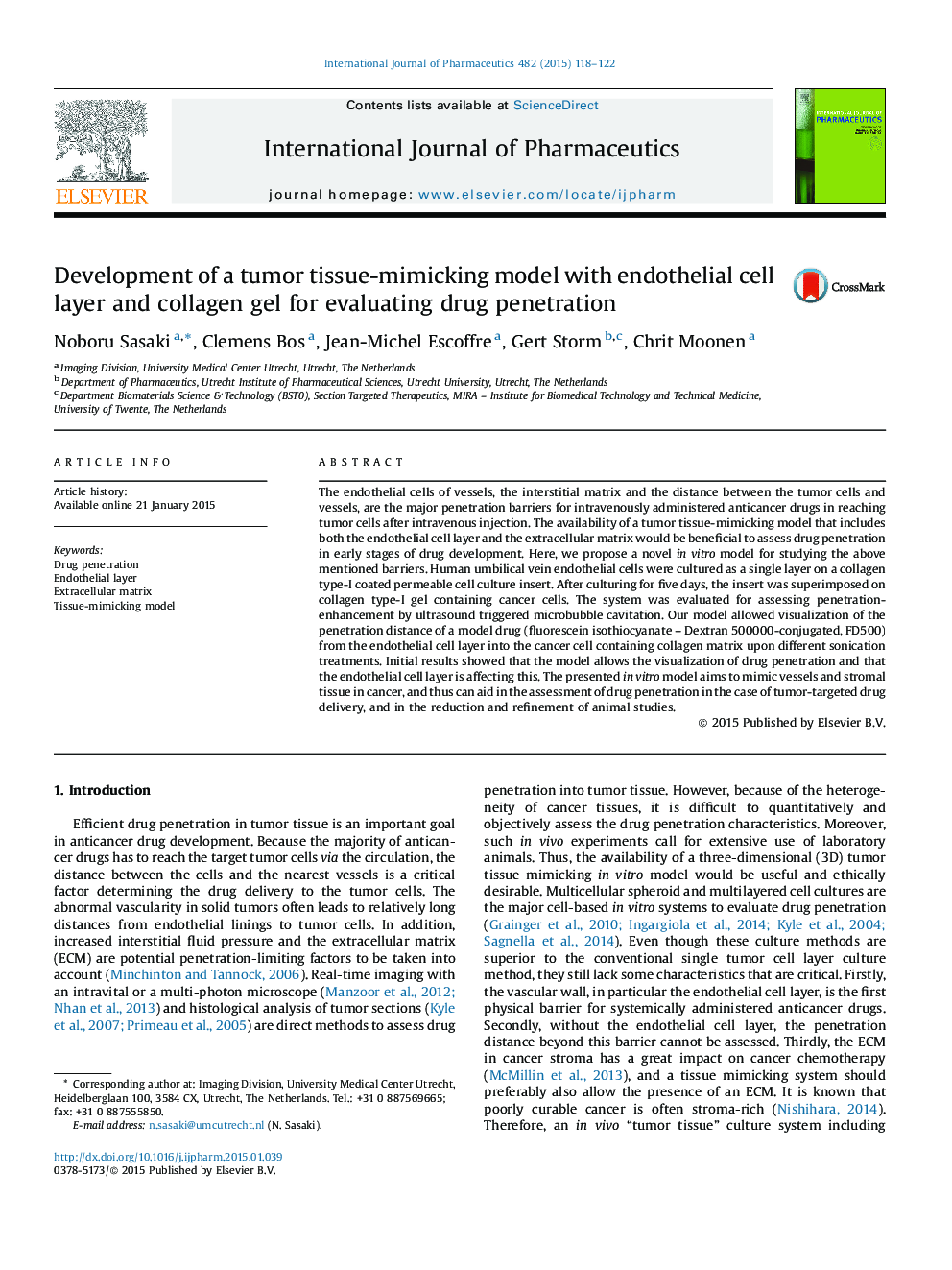| Article ID | Journal | Published Year | Pages | File Type |
|---|---|---|---|---|
| 2501424 | International Journal of Pharmaceutics | 2015 | 5 Pages |
The endothelial cells of vessels, the interstitial matrix and the distance between the tumor cells and vessels, are the major penetration barriers for intravenously administered anticancer drugs in reaching tumor cells after intravenous injection. The availability of a tumor tissue-mimicking model that includes both the endothelial cell layer and the extracellular matrix would be beneficial to assess drug penetration in early stages of drug development. Here, we propose a novel in vitro model for studying the above mentioned barriers. Human umbilical vein endothelial cells were cultured as a single layer on a collagen type-I coated permeable cell culture insert. After culturing for five days, the insert was superimposed on collagen type-I gel containing cancer cells. The system was evaluated for assessing penetration-enhancement by ultrasound triggered microbubble cavitation. Our model allowed visualization of the penetration distance of a model drug (fluorescein isothiocyanate – Dextran 500000-conjugated, FD500) from the endothelial cell layer into the cancer cell containing collagen matrix upon different sonication treatments. Initial results showed that the model allows the visualization of drug penetration and that the endothelial cell layer is affecting this. The presented in vitro model aims to mimic vessels and stromal tissue in cancer, and thus can aid in the assessment of drug penetration in the case of tumor-targeted drug delivery, and in the reduction and refinement of animal studies.
Graphical abstractFigure optionsDownload full-size imageDownload high-quality image (185 K)Download as PowerPoint slide
